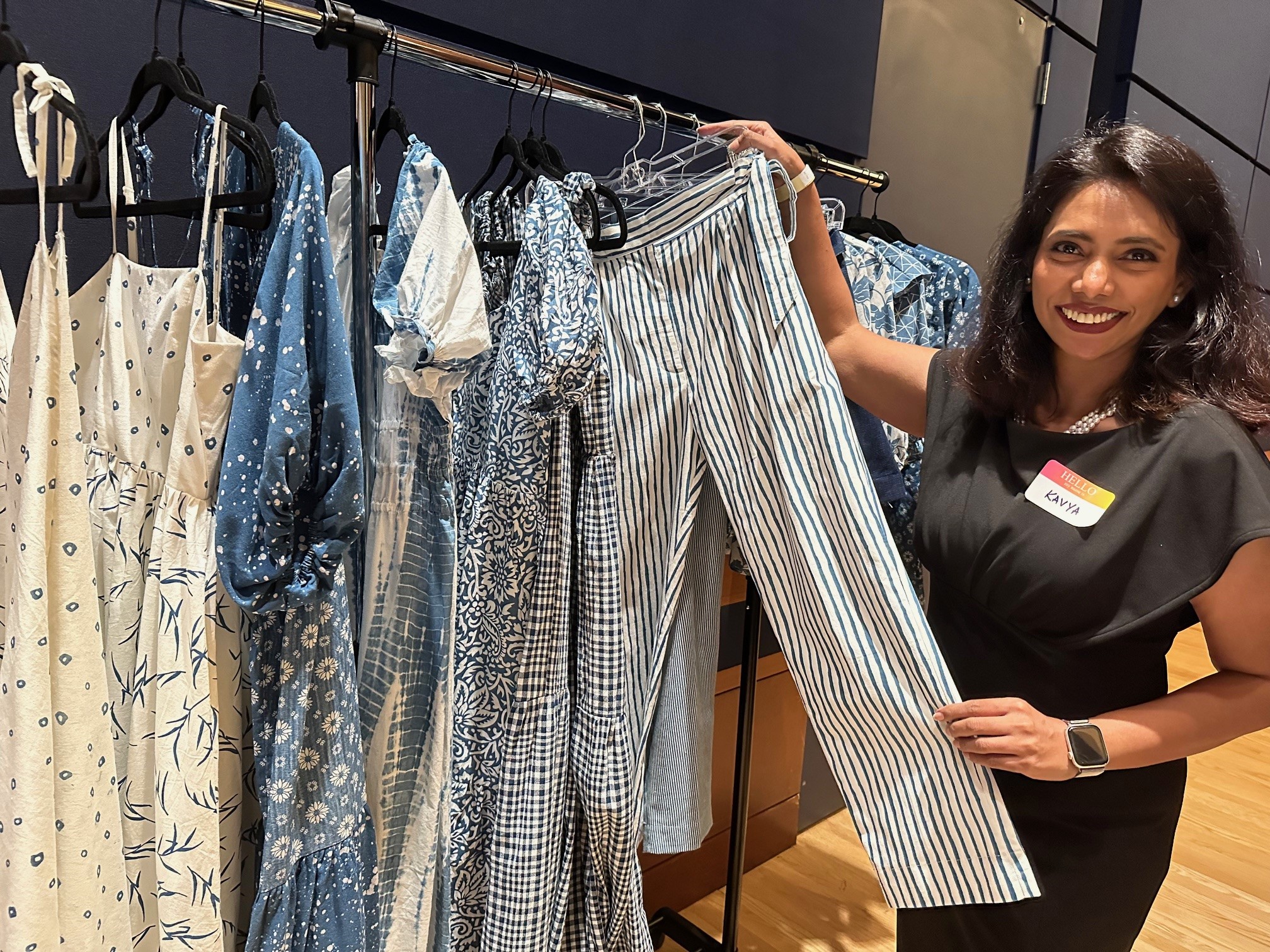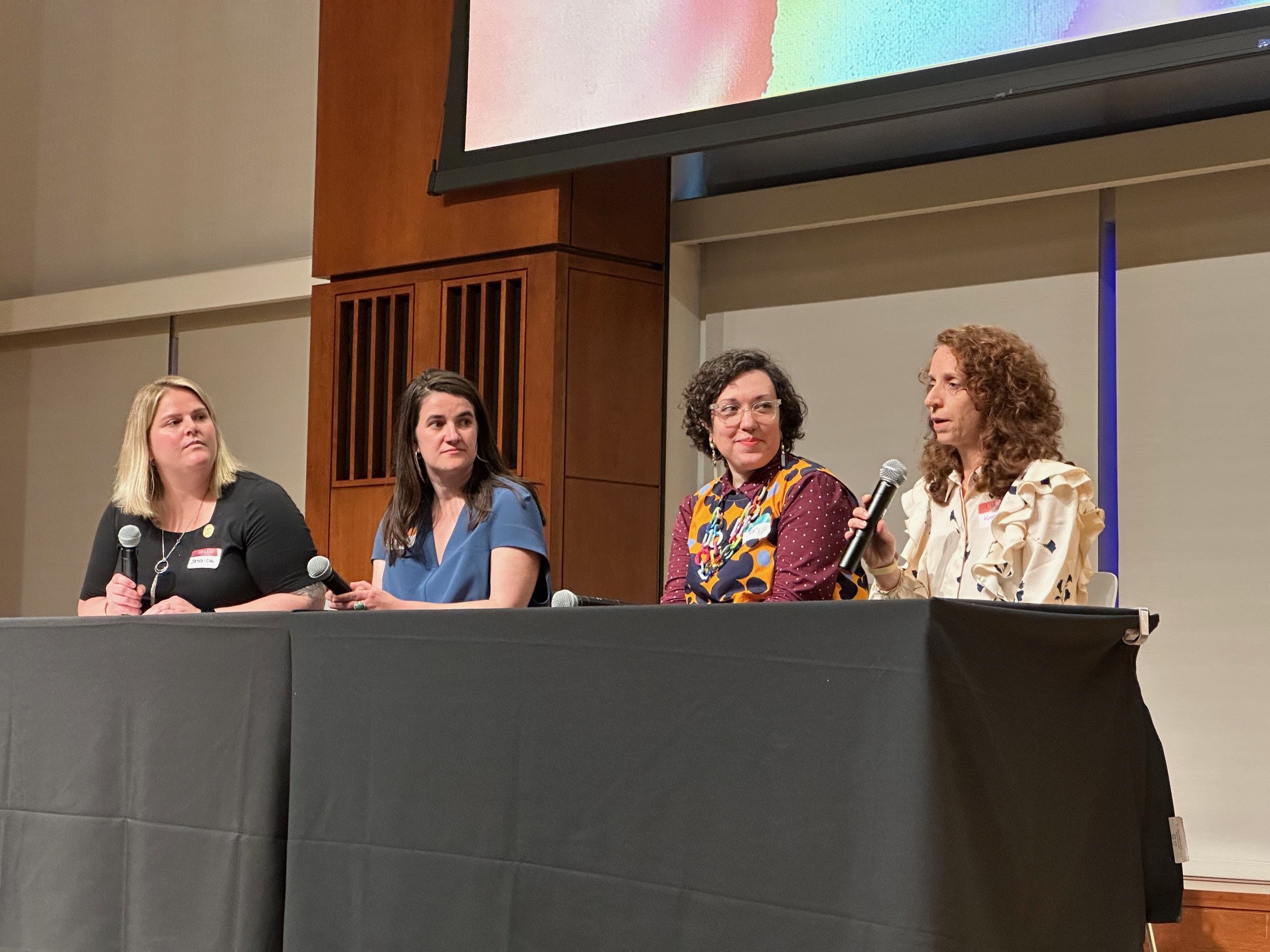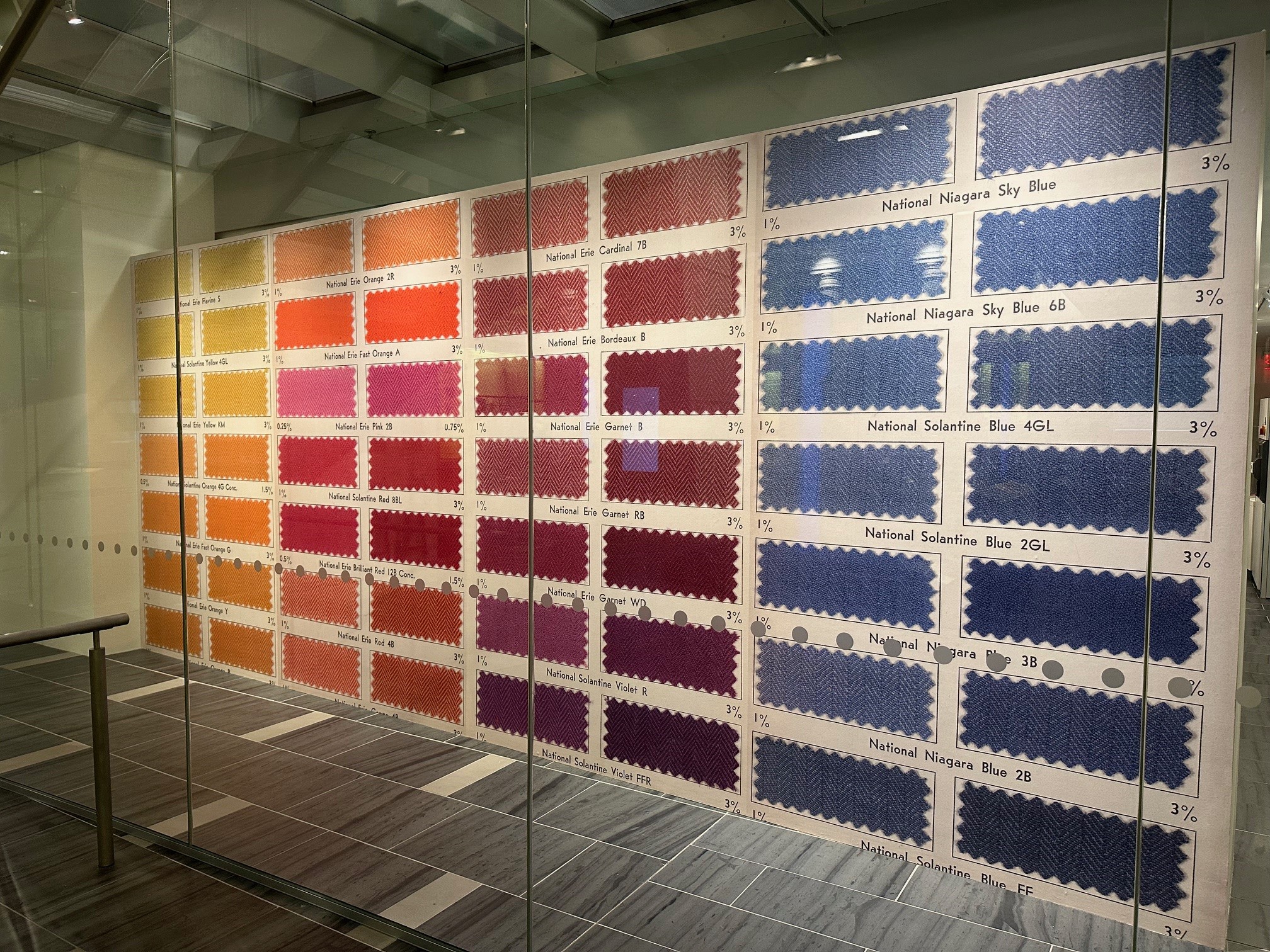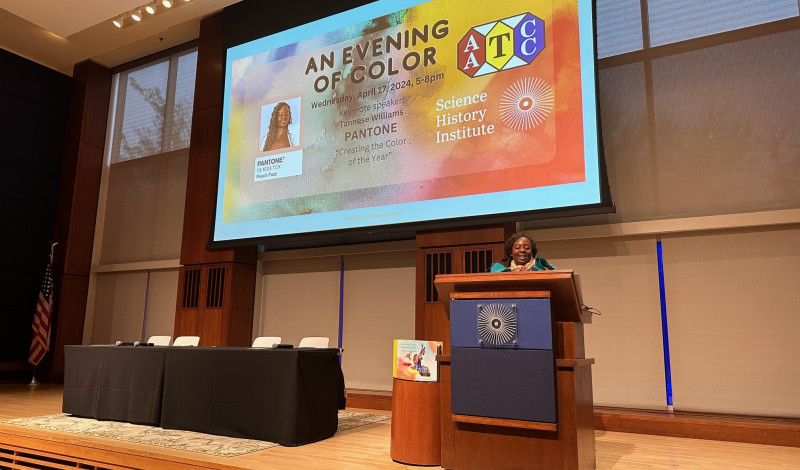AATCC Event Explores How Pantone Chooses Its 'Color of the Year'
This week, the American Association of Textile Chemists and Colorists (AATCC) hosted “An Evening of Color” in Philadelphia, Pennsylvania. The event celebrated the Science History Institute’s exhibit “BOLD” a look at colors from “test tube to textile.” The exhibit takes visitors through organic, synthetic, and natural dyes, as well as trends in fashion, as related to color and textile production, throughout history.
Before the Pantone keynote speaker took the stage, attendees were able to experience an Indigo screen printing demonstration with Kavya Swamy, a textile and apparel designer who exclusively uses natural dyes to create beautiful, vibrant clothing. She described the traditional art form, dating back thousands of years, with the goal to return to a process that eliminates harmful solutions and chemicals to accelerate the Indigo. She traveled to India to explore the traditional processes and meet the artisans who have practiced the artform for generations.
“I went to the place where they grow Indigo, I saw the harvesting process, I saw the extraction process,” she explained. “I got some dye from them and I started my research.”

Kavya Swamy, textile and apparel designer and natural dye artisan, shows off her designs using natural Indigo dye.
Although it may seem an impossibility that apparel makers could scale up operations using only natural dyes, during a panel on natural dyes, Winona Quigley, CEO and founder of Green Matters Natural Dye Company, proved that theory otherwise. While the commercial operation is still small when compared to synthetic dye manufacturers, she said that the company sources materials from farmers all over the world, making its dyes from plant- and insect-based sources.
She provided one example in which it works with Chipotle to create branded merchandise using avocado pit waste from the company. She explained that the company’s customers usually want to tell a story with naturally derived dyes. She admitted that while there are shifts in color when it comes to natural dyes, they are within a tolerance that Green Matters customers understand. It’s important, she explained, to understand that it’s not possible to make “natural dyes fit in” to expectations. Instead, customers need to fit into natural dyes.

(From left) A panel on natural dyes was moderated by Jessica Brooks of
W. L. Gore & Associates , who was joined by Winona Quigley, Green Matters Natural Dye Company; Becky Flax, Jefferson University; and Kim Livingston, Caledonian Dyeworks.
Quigley was joined by Becky Flax of Jefferson University, and Kim Livingston of Caldonian Dyeworks, a commission dye house that dyes yarns before woven or knitted, which offered a nice complement to the conversation of sustainability and scalability of natural dyes.

The BOLD exhibit at the Science History Institute in Philadelphia explores the role of natural and synthetic dyes in the textile space.
How Pantone Chooses Its ‘Color of the Year’
For those who have ever wondered how Pantone chooses its Color of the Year, the keynote session from Tannese Williams, product manager of fashion, home, and interiors at Pantone, provided an inside look into the process, which began in 1999.
“We wanted to draw attention between how color and culture intertwines, and how we express that through the language of color,” she explained, during the keynote session.
The Pantone Color Institute, or PCI, is the team involved in the choice each year, turning to the entertainment industry, traveling art collections, new artists and designers, socio-economic issues, world issues and conditions, new technologies, and even social media and sporting events for inspiration. The team has members across the globe providing input into the decision.
“We’re also listening to our customers as they talk about their aspirations and their hopes,” Williams said. “We try to provide that symbolic color that represents those feelings.”
The team also relies on color psychology to influence the choice, taking time to understand how different global events or issues have affected society.
“There’s color psychology in everything we do,” she said. “We want to reflect what’s going on in our world in the global aspect [and] culturally, specific to that time, that year. … Usually, the most popular color that keeps showing up is symbolic of the time we’re living in at that moment.”
Once the team has determined what the “mood of the world” is in that given moment, a color “family” is created. As important as the color is the color’s name. Williams explained the name is something that needs to resonate deeply with both the color and the message.
She points to one example in particular, an anomaly from most years, when two colors were chosen instead of one. In 2021, “Ultimate Gray” and “Illuminating,” a bright, friendly yellow, were chosen. The goal for the gray was to reflect the need for stability and grounding after the first years of the COVID-19 pandemic, while the uplifting yellow was meant to convey hopefulness for the future.
Turning to 2024 and this year’s color “Peach Fuzz,” she explained that something nurturing and comforting was needed.
“We’re looking for more empathy, more compassion, and that grows stronger as we imagine a more peaceful future,” she noted. “We need to be reminded that the final part of life is having the energy, the good health, and the stamina to actually enjoy it. … We’re recalibrating our priorities and aligning them to our internal values. We’re focusing on health and well-being, both mental and physical.”
While the Color of the Year doesn’t just come one color, it comes with a series of pallettes, which for Peach Fuzz included Pairings, Libations, Hybrid Hues, and Flavor-Full. Each palette features colors with names that play off of sensory experiences, such as Marsala and Grapeade, Green Banana and Dijon, and Peach Puree and Blazing Orange.
“Color names are important so it gives you the feeling as well as the color,” she explained. “You’re experiencing the color not just with one sense. If you can get two senses engaged in your color, you can make a lasting impression.”

